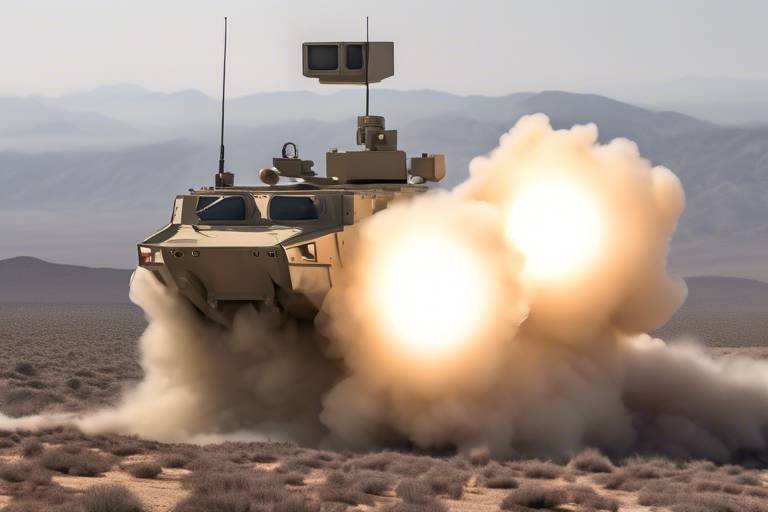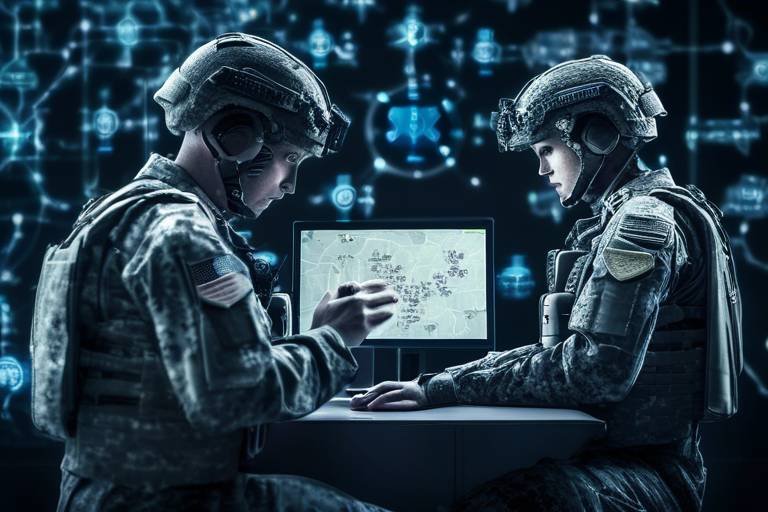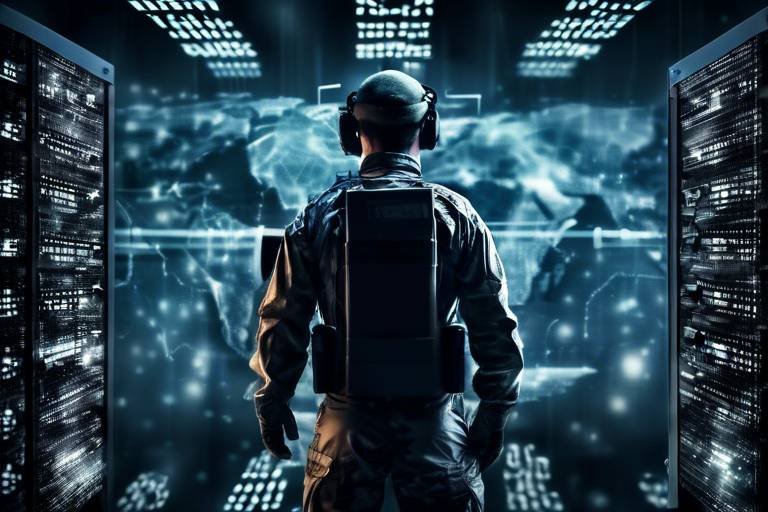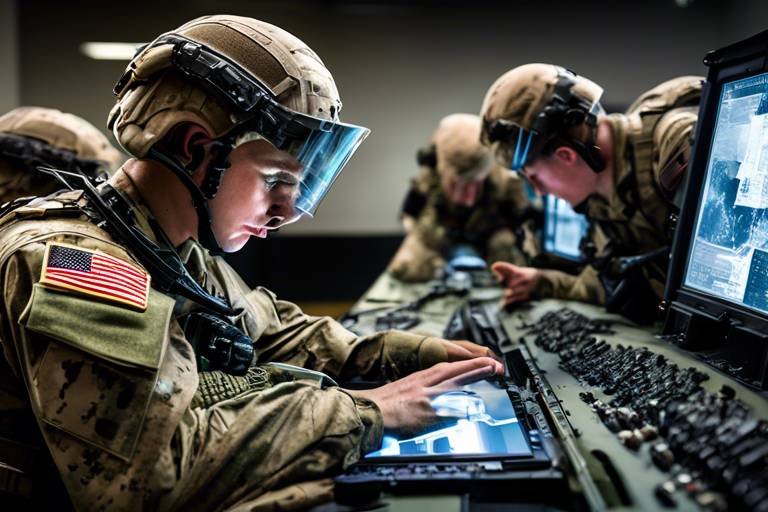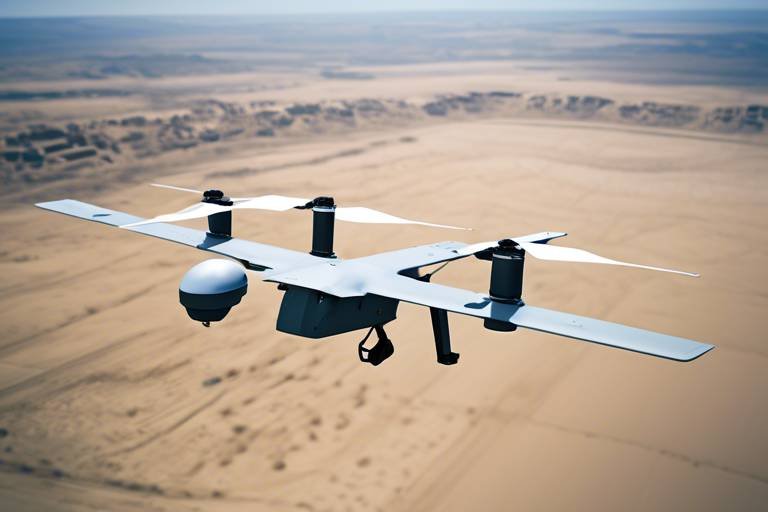The Role of Emerging Technologies in Military Strategy
In today’s fast-paced world, the landscape of military operations is undergoing a seismic shift, driven by emerging technologies. These innovations are not just enhancing traditional military capabilities; they are fundamentally reshaping the way wars are fought and strategies are devised. Imagine a battlefield where decisions are made in real-time, powered by artificial intelligence, or where soldiers are equipped with wearable technology that monitors their health and performance. This is not science fiction; it's the new reality of modern warfare.
As we delve deeper into this topic, it’s essential to understand that the integration of these technologies is not merely about having the latest gadgets. It’s about strategic advantage. Emerging technologies provide militaries with the tools to outthink, outmaneuver, and outfight their adversaries. From artificial intelligence to quantum computing, each technology plays a crucial role in enhancing operational effectiveness and decision-making processes.
For instance, consider the role of big data analytics. In a world flooded with information, the ability to sift through vast amounts of data and extract actionable insights is invaluable. Military leaders can now anticipate enemy moves, optimize resource allocation, and enhance situational awareness like never before. This capability not only improves tactical decisions but also ensures that resources are utilized efficiently, reducing waste and enhancing mission success rates.
Moreover, the adoption of unmanned aerial vehicles (UAVs), commonly known as drones, has revolutionized reconnaissance and combat operations. Drones provide real-time intelligence and precision strike capabilities while minimizing risks to personnel. Imagine being able to gather intelligence from the sky without putting a single soldier in harm's way. This shift not only saves lives but also enhances the effectiveness of military operations.
As we explore the various facets of these technologies, we can’t overlook the importance of cybersecurity. In an increasingly digital world, protecting sensitive information and communication systems is paramount. Cyber threats can cripple military operations, making cybersecurity a critical component of military strategy. The ability to defend against cyber attacks ensures that military forces can maintain operational integrity and safeguard critical data.
In summary, the role of emerging technologies in military strategy cannot be overstated. They are not just tools; they are game-changers that redefine how wars are fought. As we continue to innovate and integrate these technologies into military operations, we must also consider the ethical implications and challenges that come with them. The future of warfare is here, and it is being shaped by the very technologies that promise to enhance our capabilities and ensure our security.
- What are some examples of emerging technologies in the military?
Examples include artificial intelligence, drones, big data analytics, and quantum computing. - How does artificial intelligence affect military strategy?
AI enhances decision-making, operational efficiency, and predictive modeling on the battlefield. - Why is cybersecurity important in military operations?
Cybersecurity protects sensitive information and ensures the integrity of communication systems against cyber threats. - What role do drones play in modern warfare?
Drones provide real-time intelligence and precision strikes while minimizing risks to personnel.

Artificial Intelligence in Warfare
Artificial Intelligence (AI) is not just a buzzword; it's a game-changer in military operations. Imagine a battlefield where decisions are made not just by human intuition but by algorithms that analyze data at lightning speed. AI is revolutionizing military strategies by enabling advanced data analysis, autonomous systems, and predictive modeling. This shift enhances decision-making and operational efficiency like never before.
One of the most significant advantages of AI in warfare is its ability to process vast amounts of information quickly. In the thick of battle, commanders can't afford to be bogged down by data overload. AI systems can sift through intelligence reports, satellite images, and sensor data to provide actionable insights in real time. This capability allows military leaders to make informed choices that can turn the tide of conflict.
Moreover, AI is paving the way for autonomous systems, which can operate independently or with minimal human intervention. Think of drones that can carry out surveillance missions or even engage in combat without direct human control. These systems not only reduce the risk to personnel but also enhance operational capabilities. For instance, an AI-powered drone can analyze a target area and decide the best approach to strike, all while minimizing collateral damage.
Predictive modeling is another exciting aspect of AI in military strategy. By analyzing historical data and current battlefield conditions, AI can forecast potential outcomes of various strategies. This predictive power allows military planners to simulate different scenarios and choose the most effective course of action. It's like having a crystal ball that provides insights into the future of warfare.
However, the integration of AI in military operations doesn't come without challenges. Ethical concerns about autonomous weapons and the potential for AI to make life-and-death decisions are hot topics in military and civilian circles alike. As we embrace these technologies, we must also grapple with the moral implications and ensure that AI systems operate within a framework that prioritizes human oversight.
In summary, AI is transforming the landscape of warfare by enhancing decision-making, increasing operational efficiency, and introducing autonomous capabilities. As military strategies evolve, the role of AI will only grow, making it an indispensable tool for future conflicts. The question remains: how will we balance the benefits of AI with the ethical responsibilities that come with it?
- What is the primary benefit of AI in military operations?
AI enhances decision-making speed and accuracy by processing vast amounts of data in real time. - Are there ethical concerns regarding AI in warfare?
Yes, there are significant ethical concerns about the use of autonomous weapons and the potential for AI to make life-and-death decisions without human oversight. - How does predictive modeling work in military strategy?
Predictive modeling uses historical data and current conditions to forecast potential outcomes, helping military planners choose effective strategies. - What role do autonomous systems play in modern warfare?
Autonomous systems, such as drones, can operate independently to conduct surveillance and combat missions, reducing risks to personnel.

Cybersecurity and Defense
In an era where digital warfare is as significant as traditional combat, cybersecurity has emerged as a cornerstone of military strategy. Imagine a battlefield where the enemy is not just on the ground but lurking in the shadows of cyberspace. This evolving landscape necessitates a robust defense mechanism to protect sensitive information, communication systems, and operational capabilities. With the rise of sophisticated cyber threats, military organizations are compelled to rethink their strategies and invest heavily in cybersecurity measures.
One of the most critical aspects of cybersecurity in defense is the protection of classified data. Military operations often rely on intelligence gathered from various sources. If this information falls into the wrong hands, it could compromise missions and endanger lives. Therefore, implementing advanced encryption techniques and secure communication channels is vital. The military must ensure that its networks are fortified against intrusions, which can come from state-sponsored hackers, terrorist groups, or even rogue individuals.
Moreover, the integration of cybersecurity into military strategy goes beyond mere protection. It involves proactive measures to anticipate and mitigate potential cyber threats. This is where threat intelligence comes into play. Military organizations are increasingly leveraging data analytics and artificial intelligence to monitor network activity, detect anomalies, and respond to incidents in real-time. By employing these technologies, they can stay one step ahead of adversaries and ensure the integrity of their operations.
To illustrate the importance of cybersecurity in military defense, consider the following table that outlines some common cyber threats faced by armed forces:
| Cyber Threat | Description | Potential Impact |
|---|---|---|
| Phishing Attacks | Deceptive emails designed to steal sensitive information. | Data breaches, compromised identities. |
| Ransomware | Malware that encrypts data and demands payment for decryption. | Operational shutdown, loss of critical data. |
| DDoS Attacks | Distributed denial-of-service attacks overwhelm systems. | Service disruption, loss of communication. |
As we move forward in this digital age, the military's reliance on cybersecurity will only increase. Training personnel to recognize and respond to cyber threats is equally essential. Cybersecurity experts are now considered as crucial as traditional combat specialists. By fostering a culture of cybersecurity awareness within the military, forces can enhance their overall resilience against cyber-attacks.
In conclusion, the intersection of cybersecurity and defense is a dynamic and constantly evolving field. The military must adapt to the changing landscape of cyber threats while ensuring that its strategies remain robust and effective. As technology advances, so too must the methods used to protect against potential vulnerabilities. The future of military operations will undoubtedly hinge on the ability to secure digital assets, making cybersecurity an indispensable element of modern warfare.
- What is the role of cybersecurity in military strategy? Cybersecurity protects sensitive information and communication systems from cyber threats, ensuring operational integrity.
- How do military organizations defend against cyber attacks? They employ advanced encryption, secure communication channels, and threat intelligence to monitor and respond to potential threats.
- Why is cybersecurity training important for military personnel? Training enhances awareness and prepares individuals to recognize and respond to cyber threats effectively.
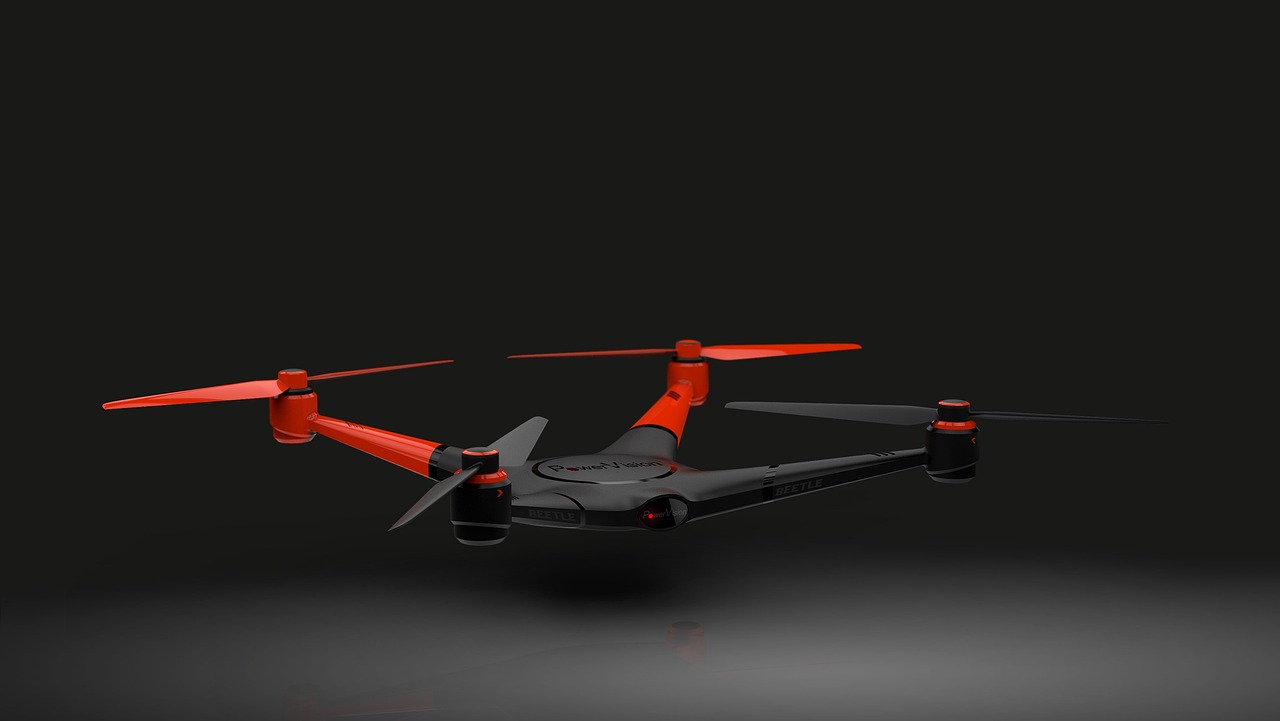
Unmanned Aerial Vehicles (UAVs)
Unmanned Aerial Vehicles, commonly known as UAVs or drones, are rapidly transforming the landscape of modern military operations. These sophisticated machines are not just flying cameras; they are powerful tools that enhance reconnaissance, surveillance, and combat capabilities. Imagine a bird's-eye view of the battlefield, where real-time data is collected and analyzed without putting human lives at risk. This is the reality that UAVs bring to military strategy.
One of the most significant advantages of UAVs is their ability to conduct reconnaissance missions. Equipped with high-definition cameras and advanced sensors, these drones can gather intelligence from areas that are difficult to access or too dangerous for manned aircraft. For instance, during conflicts in remote regions, UAVs can fly over enemy territory, providing commanders with crucial information about troop movements and potential threats. This capability not only enhances situational awareness but also helps in making informed tactical decisions.
Moreover, UAVs are revolutionizing combat operations. They can deliver precision strikes against high-value targets while minimizing collateral damage. This is particularly important in urban warfare, where the risk of civilian casualties is heightened. With the ability to strike swiftly and accurately, UAVs enable military forces to engage in operations that were once deemed too risky. The integration of advanced targeting systems allows for pinpoint accuracy, ensuring that the intended targets are neutralized effectively.
In addition to their combat and reconnaissance roles, UAVs also play a pivotal role in logistics and supply chain management. They can transport supplies, ammunition, and medical equipment to troops stationed in hard-to-reach areas, thereby enhancing operational efficiency. This capability is crucial in maintaining the momentum of military operations, especially in prolonged engagements where traditional supply routes may be compromised.
However, the rise of UAV technology is not without its challenges. The potential for cybersecurity threats is significant, as these vehicles are often controlled remotely and rely on advanced communication systems. Protecting these systems from hacking and interference is crucial to ensuring the safety and effectiveness of UAV operations. Additionally, ethical considerations regarding the use of drones in warfare continue to spark debate. The ability to conduct strikes without direct human involvement raises questions about accountability and the potential for misuse.
As we look to the future, the role of UAVs in military strategy is likely to expand even further. With advancements in artificial intelligence and machine learning, future drones may operate autonomously, making real-time decisions based on their environment. This could lead to a new era of warfare where UAVs not only support human operators but also carry out missions independently.
In summary, UAVs are a game-changer in military operations, providing enhanced capabilities that were once the stuff of science fiction. By improving reconnaissance, precision strikes, and logistics, these unmanned systems are redefining how wars are fought. As technology continues to evolve, we can expect UAVs to play an even more central role in shaping the future of military strategy.
- What are UAVs used for in the military?
UAVs are used for reconnaissance, surveillance, combat operations, and logistics support. They provide real-time intelligence and can conduct precision strikes. - How do UAVs enhance military operations?
UAVs enhance military operations by reducing risks to personnel, improving situational awareness, and enabling efficient supply chain management. - What are the ethical concerns surrounding UAV use?
Ethical concerns include accountability for strikes conducted by drones and the potential for misuse in warfare.

Advanced Robotics in Combat
When we think about the future of warfare, the image of advanced robotics often comes to mind. These remarkable machines are not just science fiction; they are becoming an integral part of modern military operations. Imagine a battlefield where robots handle the most dangerous tasks, allowing human soldiers to focus on strategy and decision-making. This is not a distant dream but a rapidly approaching reality.
Robotic systems are being integrated into various aspects of combat, offering capabilities that can significantly enhance operational effectiveness. For example, consider the role of bomb disposal robots. These machines can safely disarm explosives, reducing the risk to human life. Furthermore, they can operate in environments that are too hazardous for personnel, such as areas with chemical or biological threats. The ability to deploy a robot instead of a soldier can be the difference between life and death.
In addition to bomb disposal, robotics is revolutionizing logistics support. Robots can transport supplies, set up equipment, and even assist in medical emergencies. This not only speeds up operations but also ensures that troops have the resources they need when they need them. By automating these processes, the military can maintain a more efficient supply chain, which is crucial in high-stakes situations.
Moreover, advanced robotics is also making strides in combat roles. Autonomous weapon systems are being developed that can identify and engage targets without direct human intervention. While this raises ethical questions about the nature of warfare, it also provides a strategic advantage. These systems can operate at speeds and efficiencies that far exceed human capabilities, potentially turning the tide of battle.
However, the integration of robotics into military operations is not without its challenges. There are significant concerns regarding security and reliability. What happens if a robot is hacked? Or if it malfunctions in the heat of battle? These are critical questions that military strategists must address as they incorporate these technologies into their plans.
To give you a clearer picture of how robotics is shaping combat, let’s take a look at some key statistics:
| Robotic Capability | Impact on Operations |
|---|---|
| Bomb Disposal | Reduces risk to personnel by 80% in explosive situations |
| Logistics Support | Increases supply delivery speed by 50% |
| Combat Roles | Enhances target engagement accuracy by 90% |
As we move forward, the potential for robotics in combat is vast. With ongoing advancements in artificial intelligence and machine learning, we can expect these systems to become even more sophisticated. Imagine robots that can learn from their environment, adapt to new challenges, and even collaborate with human soldiers to achieve mission objectives. This synergy between man and machine could redefine the battlefield as we know it.
In conclusion, the role of advanced robotics in combat is a game-changer. These technologies not only enhance operational effectiveness but also save lives. As military forces around the globe continue to explore the possibilities, we stand on the brink of a new era in warfare—one where machines and humans work side by side to ensure safety and success on the battlefield.
- What are the main benefits of using robots in combat?
Robots can reduce risks to human soldiers, improve logistical efficiency, and enhance combat capabilities. - Are there ethical concerns regarding autonomous weapon systems?
Yes, the use of autonomous weapons raises important ethical questions about accountability and decision-making in warfare. - How are robots being used in logistics?
Robots can transport supplies, set up equipment, and assist in medical emergencies, streamlining military operations.

Big Data Analytics
In the realm of modern warfare, is not just a buzzword; it's a game-changer that is reshaping how military strategists approach operations. Imagine standing on a battlefield where every move, every decision, and every piece of information is analyzed in real-time. This is what big data brings to the table. By processing vast amounts of information from various sources—satellites, drones, intelligence reports, and even social media—military leaders can gain insights that were previously unimaginable.
Big data analytics allows for the identification of patterns and trends that can inform tactical decisions. For instance, by analyzing historical data on enemy movements and behaviors, commanders can predict future actions with a degree of accuracy that enhances operational planning. This predictive capability is akin to having a crystal ball that reveals not just what has happened, but what is likely to happen next. The ability to anticipate enemy maneuvers can mean the difference between victory and defeat on the battlefield.
Moreover, big data isn't just about crunching numbers; it's about making sense of those numbers in a way that is actionable. Military analysts use sophisticated algorithms and machine learning techniques to sift through data, identifying anomalies that could indicate potential threats. For example, if a particular area shows an unusual spike in communication activity, it could signal the preparation for an attack. This proactive approach allows military forces to stay one step ahead, ready to respond to threats before they materialize.
To illustrate the impact of big data analytics in military operations, consider the following table that outlines its key benefits:
| Benefit | Description |
|---|---|
| Enhanced Decision-Making | Real-time data analysis helps commanders make informed decisions quickly. |
| Improved Situational Awareness | Aggregating data from multiple sources provides a comprehensive view of the battlefield. |
| Predictive Capabilities | Identifying patterns allows for anticipation of enemy actions. |
| Resource Optimization | Data-driven insights can lead to more efficient use of military resources. |
Additionally, big data analytics plays a crucial role in logistics and supply chain management. By analyzing data related to resource availability, transportation routes, and supply demands, military operations can ensure that troops are adequately equipped and supported. This level of efficiency not only boosts morale but also enhances overall mission success rates.
As we move forward, the integration of big data analytics into military strategy will only deepen. With advancements in technology and data collection methods, the military's ability to harness data will grow exponentially. However, with great power comes great responsibility; ethical considerations surrounding data privacy and security will need to be addressed to ensure that the use of big data in military contexts is both effective and responsible.
In conclusion, big data analytics is revolutionizing military strategy by providing unprecedented insights that enhance decision-making, improve situational awareness, and optimize resources. As the battlefield becomes increasingly complex, the ability to analyze and act upon vast amounts of data will be crucial for maintaining a strategic advantage.
- What is big data analytics in the military?
Big data analytics in the military refers to the process of analyzing large volumes of data from various sources to gain insights that inform strategic decisions and enhance operational effectiveness. - How does big data improve decision-making?
Big data improves decision-making by providing real-time insights and predictive analytics that help military leaders anticipate enemy actions and optimize resource allocation. - What are the challenges of using big data in military operations?
Challenges include data privacy concerns, the need for advanced analytical tools, and ensuring data security against cyber threats.

Quantum Computing in Military Applications
In the realm of military strategy, quantum computing is emerging as a game-changer. Imagine having the ability to process vast amounts of data at lightning speed, solving complex problems that would take traditional computers years to crack. This is not science fiction; it's the reality that quantum computing promises. With its unparalleled computational power, quantum computers can perform advanced simulations and optimize logistical challenges, making them invaluable in modern warfare.
One of the most significant advantages of quantum computing lies in its potential for cryptography. Traditional encryption methods, which safeguard sensitive military communications, could become obsolete as quantum computers develop. They can easily break through current encryption protocols, leading to a pressing need for new quantum-resistant algorithms. The military must adapt to this shift to ensure that their communications remain secure in the face of evolving threats.
Moreover, quantum computing can enhance decision-making processes in real-time combat situations. For instance, by analyzing vast datasets from various sources—like satellite imagery, reconnaissance reports, and troop movements—quantum algorithms can identify patterns and provide actionable insights. This level of analysis can significantly improve situation awareness, allowing military leaders to make informed decisions swiftly.
To illustrate the potential of quantum computing in military applications, consider the following table, which highlights key areas of impact:
| Application Area | Impact of Quantum Computing |
|---|---|
| Cryptography | Development of quantum-resistant encryption methods to secure communications. |
| Logistics | Optimization of supply chains and resource allocation in real-time. |
| Simulation | Advanced modeling of combat scenarios for better strategic planning. |
| Data Analysis | Rapid processing of large datasets to uncover actionable insights. |
As we venture further into the age of quantum technology, the military must not only invest in quantum research but also in training personnel to leverage these powerful tools effectively. This includes creating interdisciplinary teams that combine expertise in computer science, mathematics, and military strategy to fully harness the potential of quantum computing.
In conclusion, the integration of quantum computing into military applications is not just a futuristic concept; it is a necessary evolution in the face of modern warfare's complexities. As we stand on the brink of this technological revolution, the military's ability to adapt and innovate will determine its effectiveness in safeguarding national security.
- What is quantum computing? Quantum computing is a type of computation that uses quantum bits (qubits) to perform calculations at speeds unattainable by traditional computers.
- How will quantum computing affect military communications? Quantum computing has the potential to break current encryption methods, necessitating the development of new quantum-resistant cryptographic techniques.
- What are the benefits of quantum computing in military logistics? It can optimize supply chains and resource allocation, ensuring that military operations run smoothly and efficiently.
- Can quantum computing improve military training? Yes, it can enhance simulations and scenario planning, providing military personnel with better preparation for real-world situations.

Augmented and Virtual Reality Training
In today's fast-paced military landscape, augmented reality (AR) and virtual reality (VR) are revolutionizing how soldiers are trained, making the learning process not only more engaging but also significantly more effective. Imagine stepping into a training environment where the chaos of the battlefield is simulated around you, allowing for a realistic and immersive experience. This technology is not just a gimmick; it’s a game-changer that prepares military personnel for real-world situations in ways traditional training methods simply cannot achieve.
One of the most compelling aspects of AR and VR training is the ability to create highly customizable scenarios. Trainers can develop specific exercises tailored to the unique challenges a unit might face. For example, a squad preparing for an urban operation can practice navigating through a virtual city filled with simulated threats, honing their skills in a safe yet realistic environment. This level of preparation can mean the difference between life and death in actual combat situations.
Moreover, the use of these technologies allows for immediate feedback. In a traditional training setting, soldiers may wait days or even weeks to receive evaluations on their performance. With VR and AR, instructors can assess actions in real-time, providing instant critiques and adjustments. This immediacy not only accelerates learning but also reinforces knowledge retention, ensuring that skills are ingrained more deeply.
Another significant benefit is the reduction of training costs and risks. Traditional training often requires extensive resources, including live ammunition, vehicles, and other costly equipment. By utilizing AR and VR, military organizations can minimize these expenses while still providing a comprehensive training experience. Additionally, these technologies eliminate the risks associated with live training exercises, allowing soldiers to practice high-stakes scenarios without the danger of actual harm.
To illustrate the effectiveness of AR and VR training, consider the following table that outlines some key advantages:
| Advantage | Description |
|---|---|
| Immersive Learning | Provides realistic scenarios that enhance engagement and retention. |
| Customizable Training | Allows for tailored exercises based on specific mission requirements. |
| Immediate Feedback | Enables real-time assessment and adjustment of soldier performance. |
| Cost Efficiency | Reduces the need for expensive resources and minimizes training risks. |
As military forces around the globe continue to embrace these innovative training methods, the potential for enhanced operational readiness grows exponentially. Soldiers who train using AR and VR are not only more prepared but also exhibit higher confidence levels when facing real-world challenges. This technological shift is paving the way for a new era in military training, where the line between reality and simulation blurs, ultimately leading to more effective and efficient forces.
- What is the difference between augmented reality and virtual reality in military training?
Augmented reality overlays digital information onto the real world, while virtual reality immerses users in a completely simulated environment. - How does AR and VR training improve soldier performance?
By providing realistic scenarios and immediate feedback, soldiers can practice and refine their skills more effectively than through traditional training methods. - Are there any risks associated with AR and VR training?
While generally safe, soldiers must be trained to use the technology properly to avoid issues such as disorientation or over-reliance on simulation.
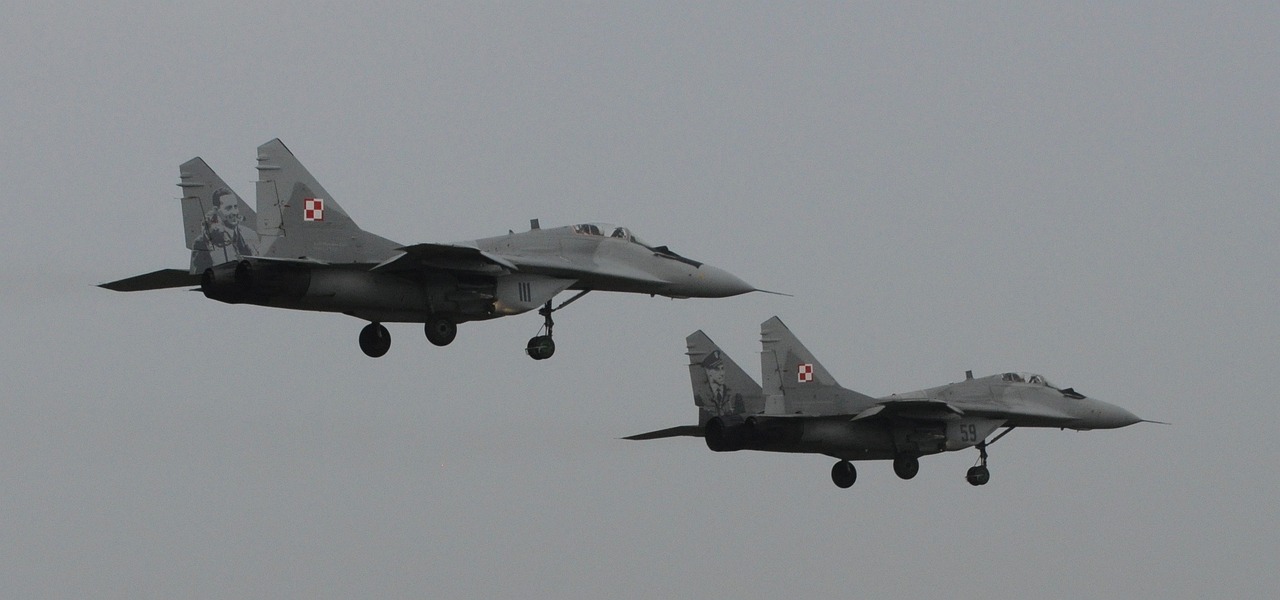
Biotechnology and Soldier Enhancement
Biotechnology is no longer just a field reserved for laboratories and research institutions; it has become a pivotal component in enhancing the capabilities of modern soldiers. Imagine a soldier who can heal faster, endure extreme conditions, and possess enhanced physical abilities—this is not a scene from a sci-fi movie, but a glimpse into the future of military operations. With advancements in genetic engineering, bioinformatics, and synthetic biology, the military is exploring ways to push the boundaries of human performance.
One significant area where biotechnology is making waves is in genetic modifications. Scientists are investigating how certain genetic traits can be enhanced or introduced to improve physical and cognitive abilities. For instance, research is being conducted on genes responsible for muscle growth and endurance, potentially allowing soldiers to perform at peak levels for extended periods. This enhancement could be likened to upgrading a vehicle’s engine; just as a more powerful engine allows for better performance, so too could genetic enhancements lead to superior soldier capabilities.
Moreover, biotechnology is not just about physical enhancements; it also extends to mental resilience. The stresses of combat can take a toll on a soldier’s mental health, leading to conditions such as PTSD. New biotechnological approaches are focusing on developing treatments that can help soldiers cope better with stress and trauma. Imagine a soldier who can process traumatic events without long-lasting psychological effects—this is the promise of biotechnology in mental health.
Another exciting development is the use of biomaterials for injury recovery. Advanced materials derived from biological substances are being designed to interact with the body in ways that promote healing. These materials can be used in medical procedures to repair damaged tissues or even create artificial organs. In combat, where every second counts, having access to such technologies could mean the difference between life and death.
Furthermore, the integration of biotechnology into soldier enhancement raises important ethical questions. As we venture into this new frontier, we must consider the implications of altering human biology. Who gets access to these enhancements? What are the long-term effects on individuals and society? These questions are crucial as we navigate the complexities of biotechnology in military applications.
To summarize, biotechnology is set to revolutionize the way we think about soldier enhancement. From genetic modifications to advanced biomaterials, the potential benefits are enormous. However, with great power comes great responsibility. As we embrace these technologies, we must tread carefully, ensuring that ethical considerations are at the forefront of our advancements.
- What are the main benefits of biotechnology for soldiers?
Biotechnology can enhance physical and mental capabilities, improve recovery from injuries, and promote overall resilience in soldiers. - Are there ethical concerns regarding genetic modifications?
Yes, ethical concerns include access to enhancements, potential long-term effects, and the implications of altering human biology. - How does biotechnology improve soldier mental health?
Biotechnology aims to develop treatments that help soldiers cope with stress and trauma, potentially reducing the incidence of PTSD. - What role do biomaterials play in soldier recovery?
Biomaterials can be used to repair damaged tissues and promote faster healing, which is crucial in combat situations.
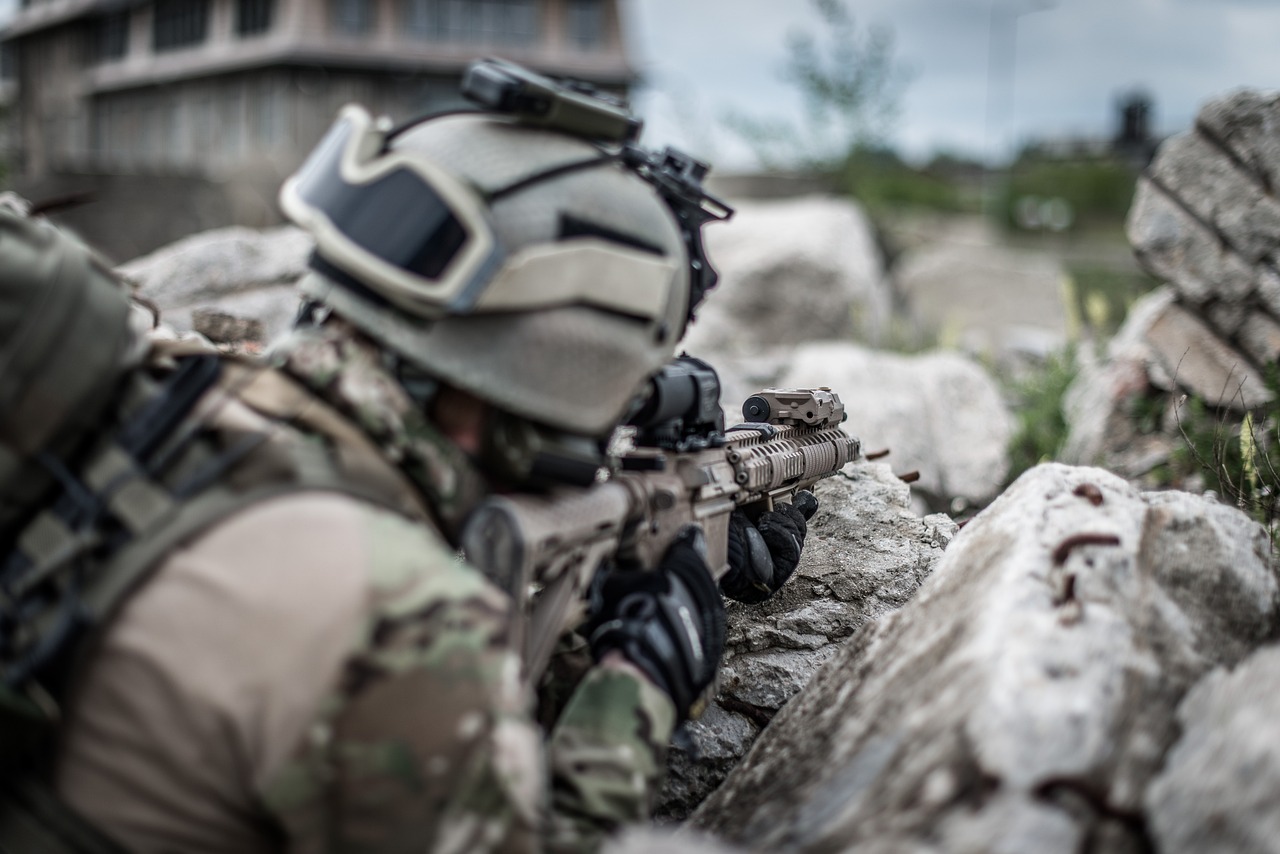
Sustainable Technologies in Military Operations
In today's world, where climate change and environmental degradation are pressing issues, the military is not exempt from the need to adopt sustainable technologies. As we strive to balance operational effectiveness with environmental stewardship, the integration of these technologies into military operations has become a critical focus. Imagine a battlefield where the energy sources are not only efficient but also eco-friendly, minimizing the ecological footprint of military activities. This shift is not merely a trend; it’s a necessity that reflects a broader understanding of our responsibility towards the planet.
One of the most significant advancements in sustainable military operations is the use of renewable energy sources. Solar panels, wind turbines, and biofuels are being utilized to power bases and vehicles, reducing dependence on fossil fuels. For instance, the U.S. Army has been experimenting with solar-powered tents that can provide energy for communication systems and essential equipment. This innovation not only cuts down on fuel logistics but also enhances operational agility. Imagine a unit deployed in a remote area, relying on the sun to power their mission—this is the future of military energy.
Moreover, energy efficiency is being prioritized through the development of advanced vehicle technologies. Electric and hybrid vehicles are not just for civilian use; they are making their way into military fleets. These vehicles offer reduced emissions and lower operational costs while maintaining the necessary performance standards. The transition to electric vehicles can significantly decrease the logistical burden of fuel supply chains, allowing troops to focus on their primary objectives rather than worrying about fuel shortages.
Another fascinating area is the use of smart materials in military gear and equipment. These materials can adapt to environmental changes, providing enhanced protection and functionality. For example, uniforms that can regulate temperature or armor that can change its properties based on the threat level are not just science fiction; they are becoming a reality. Such innovations not only improve soldier performance but also contribute to sustainability by reducing the need for multiple sets of gear.
Furthermore, the military is increasingly recognizing the importance of sustainable logistics. This involves optimizing supply chains to minimize waste and reduce the environmental impact of transporting goods. By employing advanced analytics and AI, military strategists can forecast supply needs more accurately, thereby reducing excess and ensuring that resources are used efficiently. This approach not only saves money but also aligns military operations with broader sustainability goals.
In conclusion, the integration of sustainable technologies in military operations is not just about being environmentally friendly; it’s about enhancing operational effectiveness and ensuring long-term viability. As the military continues to embrace these innovations, it sets a precedent for other sectors to follow. The future of military strategy lies in its ability to adapt and innovate, and sustainability is at the heart of this evolution.
- What are some examples of sustainable technologies used in the military?
Renewable energy sources like solar and wind, electric vehicles, and smart materials are some examples. - How does the military benefit from sustainable technologies?
These technologies reduce operational costs, enhance efficiency, and minimize environmental impact. - Are sustainable practices in the military a new trend?
No, they are becoming essential as the military recognizes its role in addressing global environmental challenges. - Can sustainable technologies improve soldier performance?
Yes, innovations like temperature-regulating uniforms can enhance comfort and effectiveness in the field.
Frequently Asked Questions
- How is artificial intelligence changing military strategy?
Artificial intelligence is revolutionizing military strategy by enabling advanced data analysis, enhancing operational efficiency, and facilitating autonomous systems. This technology allows military leaders to make quicker and more informed decisions on the battlefield, ultimately improving mission outcomes.
- Why is cybersecurity critical in modern military operations?
Cybersecurity is crucial because military operations increasingly rely on digital communication and data management. Protecting sensitive information from cyber threats ensures the integrity of military strategies and communication systems, safeguarding operations from potential attacks.
- What role do unmanned aerial vehicles (UAVs) play in military strategy?
UAVs, or drones, are transforming military strategy by providing real-time reconnaissance and precision strike capabilities. They reduce risks to personnel by conducting missions in hostile environments, allowing for more effective and safer operations.
- How are robotics being utilized in combat?
Robotic systems are being integrated into military operations for various roles, including bomb disposal, logistics support, and even direct combat functions. These advancements enhance operational effectiveness and improve soldier safety during missions.
- What advantages does big data analytics offer to military strategists?
Big data analytics enables military strategists to process vast amounts of information quickly, uncovering patterns and insights that inform tactical decisions. This leads to improved situational awareness and enhances overall mission planning and execution.
- How is quantum computing expected to impact military strategy?
Quantum computing promises to revolutionize military strategy by providing unparalleled computational power. This capability will enable advanced simulations, improve cryptography, and tackle optimization challenges that traditional computers struggle with, enhancing strategic planning and execution.
- In what ways are augmented and virtual reality being used for military training?
Augmented and virtual reality technologies are enhancing military training by creating immersive environments for soldiers to practice skills and scenarios. This innovative approach improves readiness and effectiveness, allowing personnel to experience realistic situations without the associated risks.
- What advancements in biotechnology are being explored for soldier enhancement?
Biotechnology is paving the way for advancements in soldier health and performance, including genetic modifications and enhanced physical capabilities. These innovations aim to improve resilience against injuries and stress, ultimately enhancing the overall effectiveness of military personnel.
- Why are sustainable technologies important in military operations?
Sustainable technologies are essential for reducing the environmental impact of military operations. By improving energy efficiency and ensuring long-term operational sustainability, these technologies help military forces adapt to diverse environments while minimizing their ecological footprint.



